1925 Knight Templar Stand
Alone Ashtray
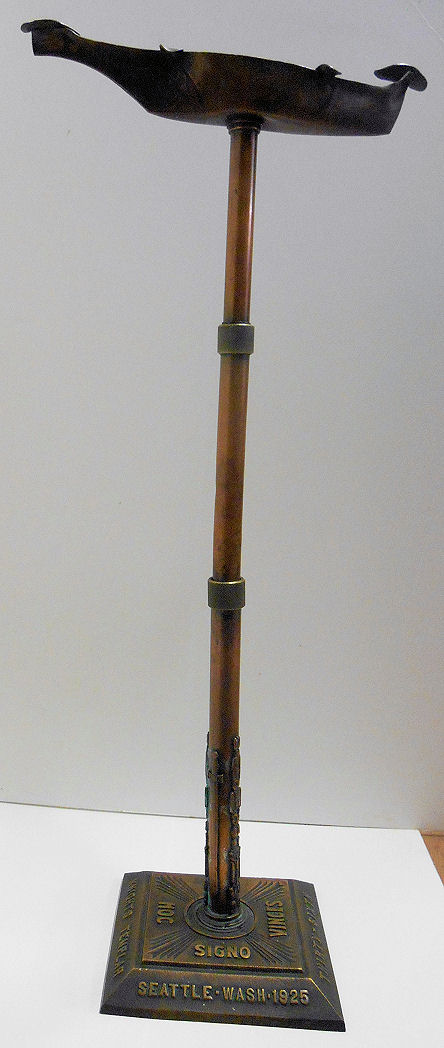


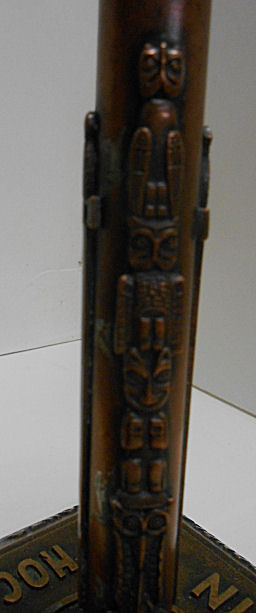
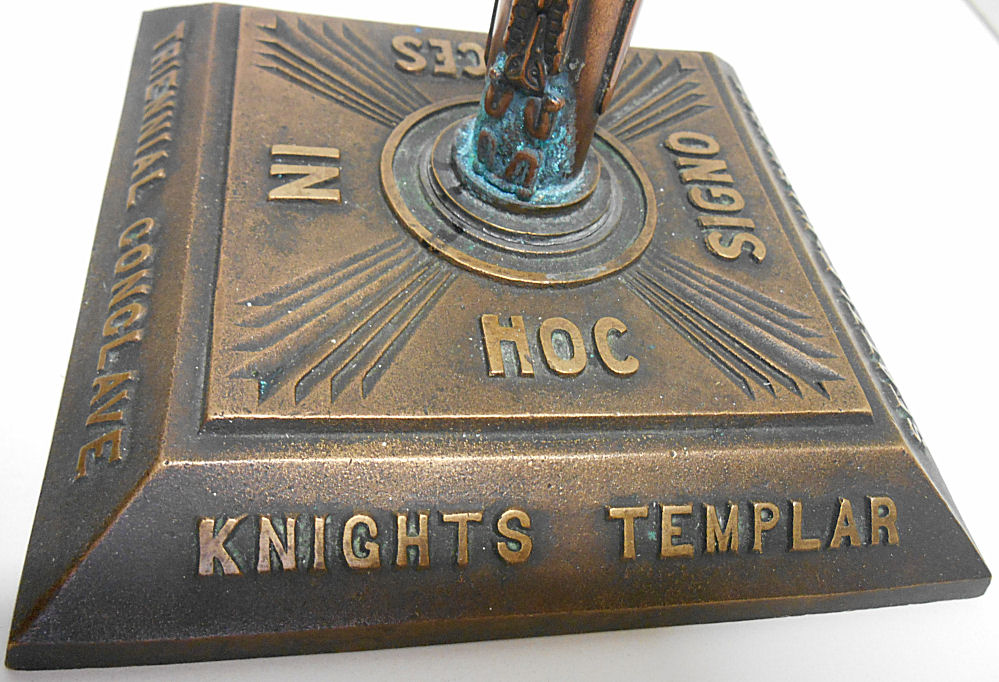
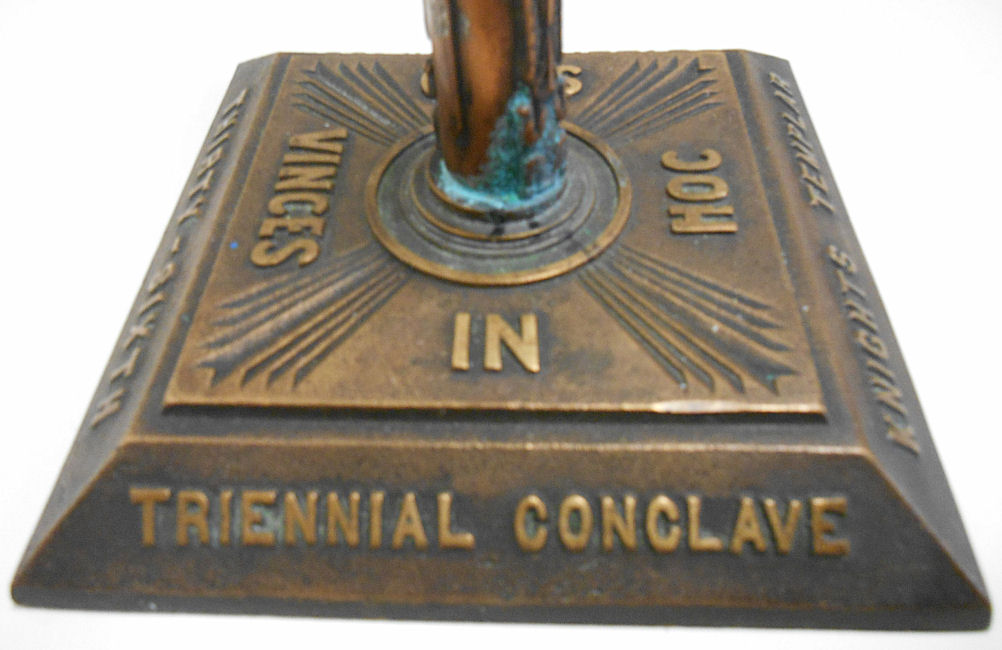

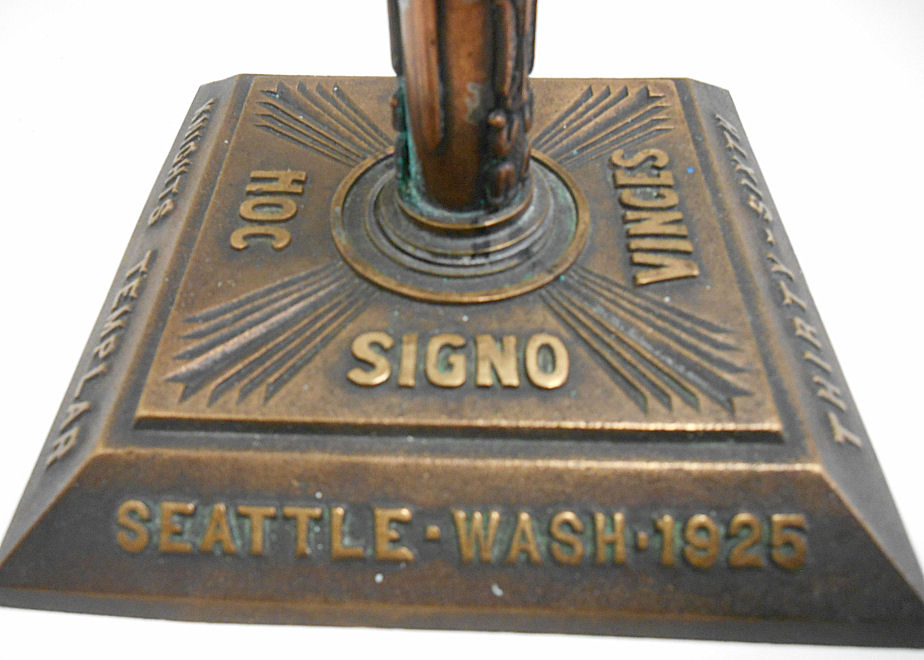
This beautiful
Knight Templar stand alone ashtray comes from the Thirty-Sixth Triennial
Conclave that was held in Seattle, Washington – 1925. It is made of copper
with an adjustable pole bearing both Knight Templar symbolism and Pacific
Northwest cultural embellishments.
The theme for this
ashtray represented the indigenous peoples of the Pacific Northwest Coast. There
were many nations and tribal affiliations, each with distinctive cultural and
political identities, but they shared certain beliefs, traditions and practices,
such as the centrality of salmon as a resource and spiritual symbol. The term
Northwest Coast or North West Coast is used in anthropology to refer
to the groups of Indigenous people residing along the coast of British Columbia,
Washington state, parts of Alaska, and (depending upon who is defining the
area), Oregon and. The term Pacific Northwest is largely used in the
American context.
Prior to the
contact with Westerners, warfare between nations, and the enslaving of captives
was also an enterprise common to many of the groups. At one point the region had
the highest population density of a region inhabited by Aboriginal peoples in
Canada.
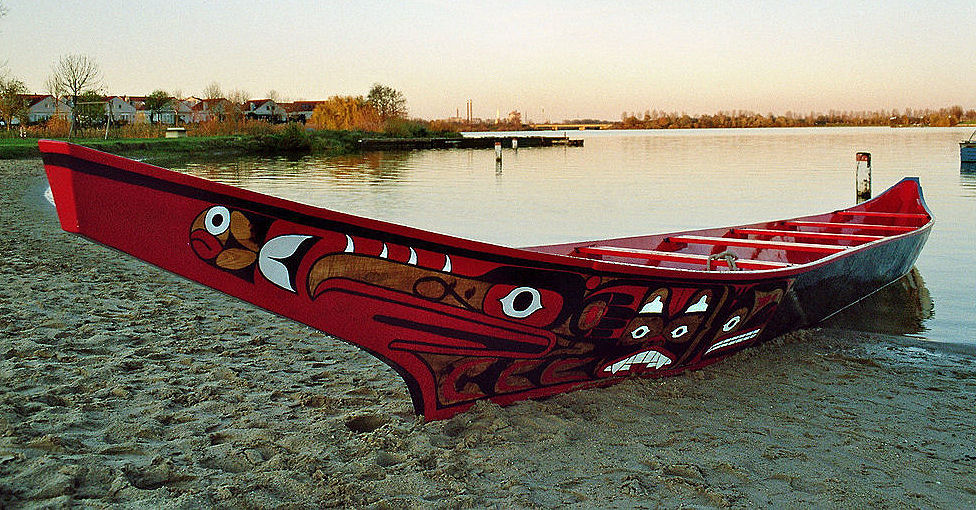
Masterfully
designed canoes of many sizes and forms were made on the coast of North
America. They were the main form of transportation for the indigenous people of
the area until long after European colonization. In recent years, the craft of
canoe-making has been revived, and a few have been built by a number of the
native nations. Like those made in traditional times, they have proved eminently
seaworthy.
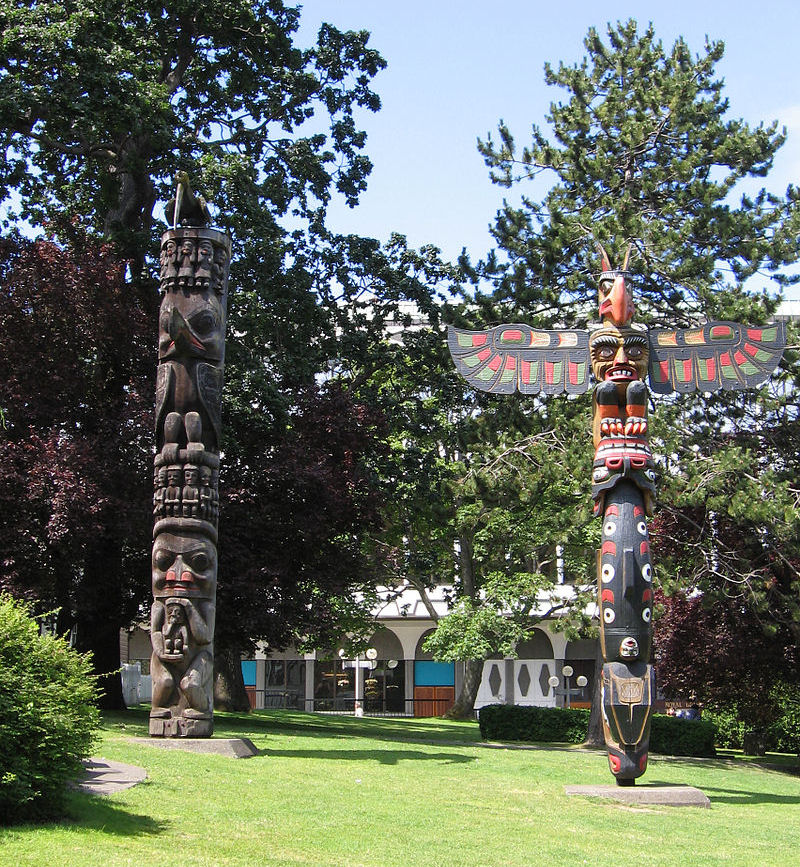
Totem
poles pictured around the base
of the pole were monumental sculptures carved on poles, posts, or pillars with
symbols or figures made from large trees, mostly western red cedar, by
indigenous peoples of the Pacific Northwest coast of North America (northwestern
United States and Canada's western province, British Columbia). The word
totem derives from the Algonquian (most likely Ojibwe) word odoodem [oˈtuːtɛm],
"his kinship group". Totem poles are not religious objects, but they do
communicate important aspects of native culture. Carvings of animals and other
characters typically represent characters or events in a story. The carvings may
symbolize or commemorate cultural beliefs that recount familiar legends, clan
lineages, or notable events. The poles may also serve as functional
architectural features, welcome signs for village visitors, mortuary vessels for
the remains of deceased ancestors, or as a means to publicly ridicule someone.
Given the complexity and symbolic meanings of totem pole carvings, their
placement and importance lies in the observer's knowledge and connection to the
meanings of the figures.
A
special “Thank You” to Gene and Jeannie Presler who donated this wonderful
artifact to our museum in memory of their dear friend Stuart Rice who passed
away in 2013.

